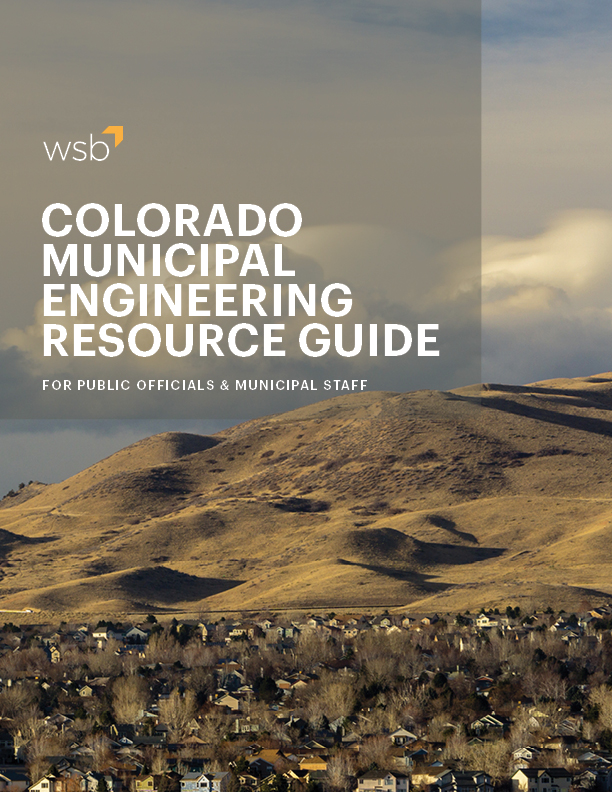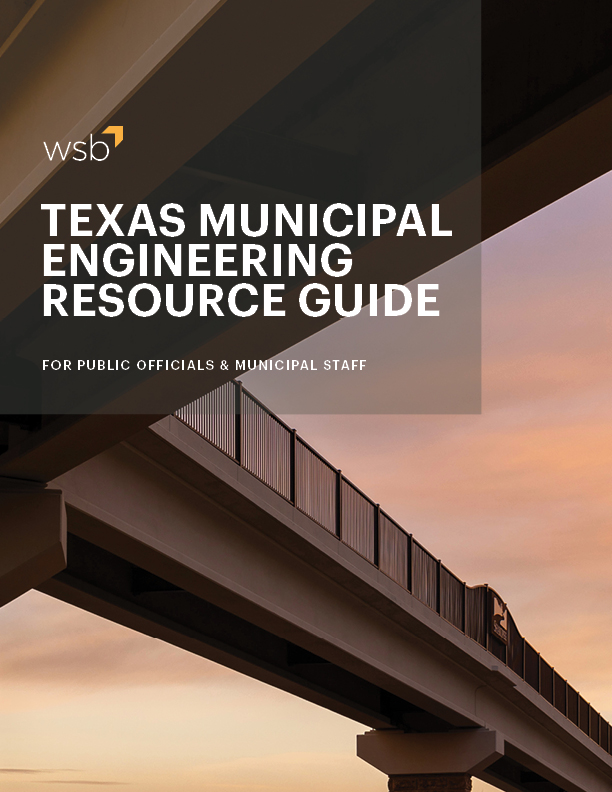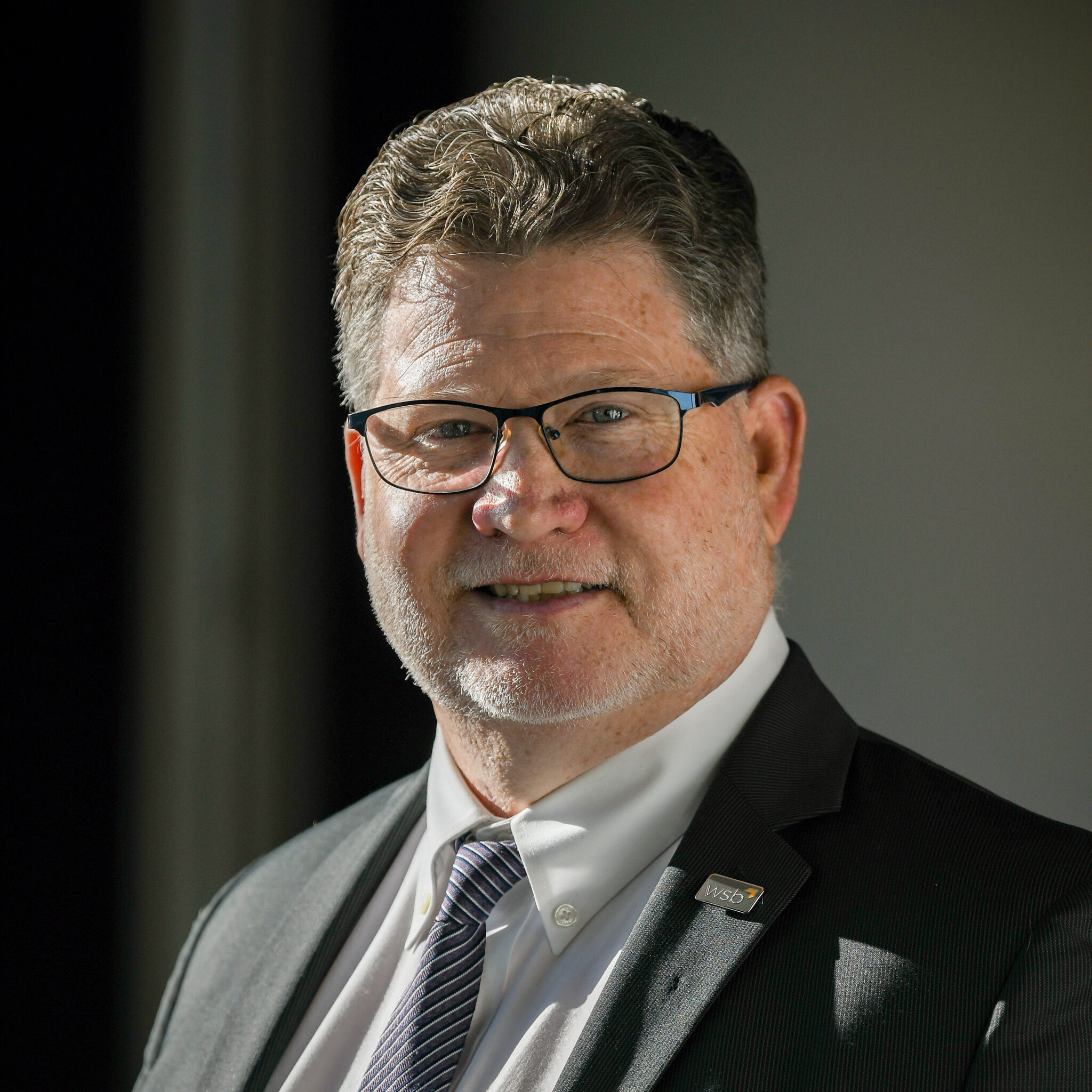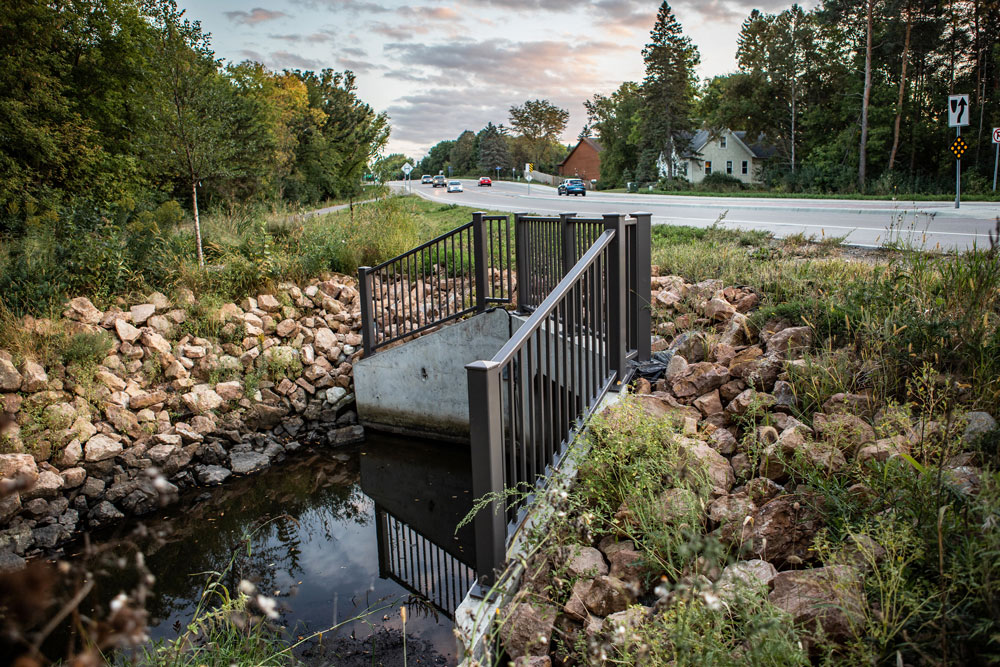Month: April 2025
The firm expands leadership opportunities with the promotions of Chris Kester and Mark Watson.
February 15, 2024
Minneapolis, Minn – WSB, a forward-thinking design and consulting firm, announced today they have expanded leadership in the construction division. Chris Kester has been promoted to director of project controls and Mark Watson has been promoted to director of materials engineering.
The promotions of Kester and Watson support WSB as the firm grows its national presence. Kester and Watson both have many years of experience in the Architecture, Engineering and Construction (AEC) industry, bringing immense value to the firm.
“This is an exciting opportunity for Chris to grow the team,” said Andy Kaiyala, vice president of technology & controls. “In this role, he will connect design and construction, creating a solid foundation to better support our clients. He is well-positioned to provide leadership in this new role at WSB.”
Kester has worked in the AEC industry for nearly 15 years with a background in field work, estimating responsibilities and more. Combined with the Digital Construction Management team, Kester focuses on delivering new methods and procedures, discovering how things are most effectively built and employing tools to optimize projects.
“We are uncovering what the future of the industry looks like,” said Kester. “This is an exciting time to work in the AEC industry. I look forward to using these advancements to serve communities across the U.S.”
Watson oversees quality management of materials for heavy civil, commercial, and vertical construction projects. In this role, he supports pre-letting services, design and post-letting construction related to material and quality control.
“It’s fulfilling to work toward expanding the role of field services at WSB,” said Watson. “My career began in materials, so I am eager to focus more attention on this area.”
“Mark has an extensive background in materials, design and construction— he’s very diverse,” said Mike Rief, senior vice president, construction. “Combining his experience with his passion and drive for his work sets up the construction division for success.”
Kester and Watson bring industry experience, strengthening WSB’s construction division. As WSB continues to grow, their leadership is a major asset to the firm.
Chris Kester
Director of Project Controls
[email protected] | 651.492.3853
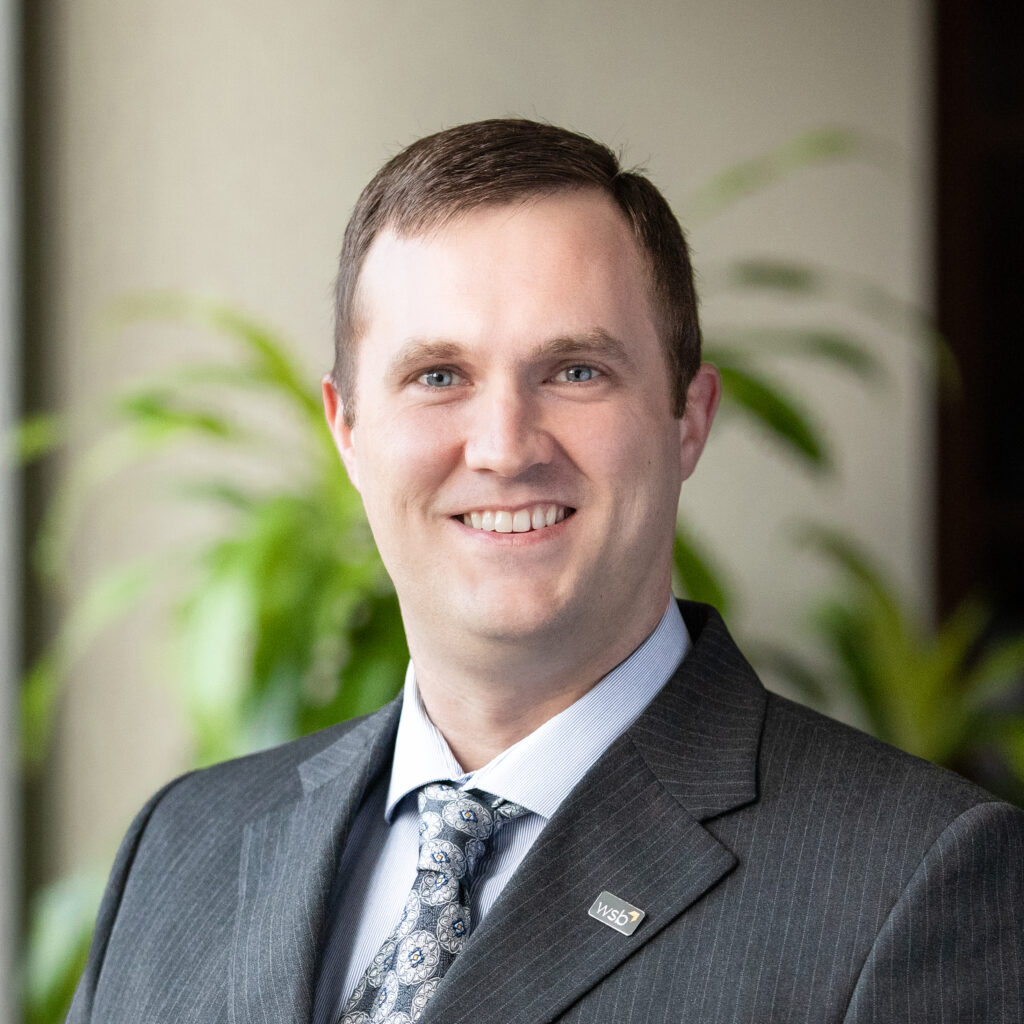
Mark Watson
Director of Materials Engineering
[email protected] | 612.248.9365
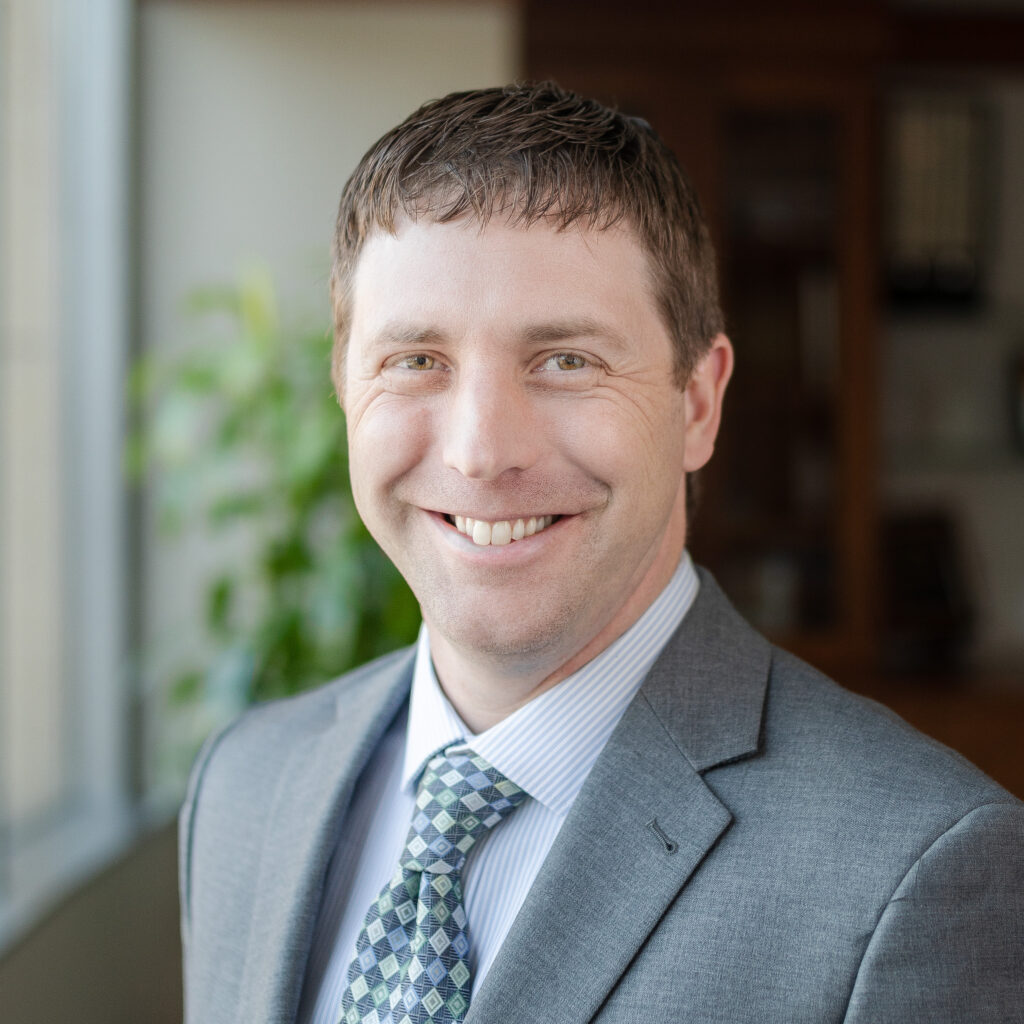
WSB recently made the Minneapolis/St. Paul Business Journal’s Twin Cities Largest Engineering Firms list. This list is designed for firms headquartered in the Twin Cities and is ranked on engineering billings. WSB is ranked second on the 2023 list.
View more information about the Twin Cities Largest Engineering Firms list here.
February 20, 2024
AE’S strong footprint solidifies WSB’s presence in the Southeast U.S.
MINNEAPOLIS, MINN. — WSB LLC (“WSB”), one of the nation’s fastest growing infrastructure engineering and consulting firms, today announced the acquisition of AE Engineering, Inc. (“AE”), a high-growth transportation infrastructure engineering firm based in Jacksonville, Florida. The strategic addition of AE will solidify WSB’s presence and service offerings in the southeastern United States. WSB is a portfolio company of GHK Capital Partners LP (“GHK”), a leading middle-market private equity firm based in Greenwich, CT.
“WSB is moving forward in building a national brand,” said Bret Weiss, WSB’s president and chief executive officer. “The Southeast is an important market for transportation infrastructure engineering given the significant population growth and infrastructure investment present in the region. AE has an outstanding reputation, and their leaders match our culture with their approach and entrepreneurial spirit. We are eager to build on the success of AE by introducing expanded services to complement their already successful program.”
The acquisition of AE brings 13 offices and more than 170 employees into WSB across the Southeast. Combined, WSB now operates 49 offices with more than 1,250 employees nationwide to serve its clients across the government, commercial and energy markets.
“WSB is a strong and growing firm that is an excellent match for AE and our clients,” said Rod Myrick, AE’s president. “We’ve always tried to represent the best in the industry and to be a trusted asset to our clients and partners. AE is joining a firm with that same commitment. We are eager to build on the strengths and success of WSB by introducing expanded services to complement our existing operation in Florida and throughout the Southeast.”
WSB and AE will work together to develop a single go-to market approach as WSB in the coming months. This represents WSB’s second acquisition in the last twelve months. In September 2023, the firm acquired Oklahoma-based EST, a 350-person transportation infrastructure engineering firm.
About WSB
WSB, a design and consulting firm providing engineering, planning, environmental and construction services. Its staff improves the way people engage with communities, transportation, infrastructure, energy and our environment. WSB offers services in more than 50 complementary areas to seamlessly integrate planning, design and implementation. Its coast-to-coast client base is served from 49 offices in 9 states. WSB’s staff is inspired to look beyond today and capitalize on the opportunities of tomorrow. Guided by a strong vision and an authentic passion, WSB is a company that strives to forge ahead. To learn more, visit wsbeng.com.
About AE
AE Engineering, Inc. (AE) is a client-focused transportation infrastructure engineering firm founded in 2006, and provides professional services to governmental agencies including State, County and City, as well as private sector clients. Headquartered in Jacksonville, FL, AE’s core capabilities include Construction Engineering & Inspection (CEI), Civil Engineering, Construction Management, Laboratory & Materials Testing, Contractor Quality Control (CQC), Asset & Infrastructure Maintenance, Building Inspection and Planning services.
About GHK Capital Partners LP
GHK is a leading middle-market private equity firm focused on making control investments in industrial companies across North America. More information about GHK and our team is available on our website www.ghk.com.
February 21, 2024
Each year, the Minnesota Society of Professional Engineers (MnSPE) recognizes an outstanding individual with the Young Engineer of the Year Award. The recipient is selected based on their achievements of a licensed MnSPE member under the age of 35. We are proud to announce Rachel Scheu, Graduate Engineer, was selected as the 2023 recipient. Rachel was awarded this honor at the MnSPE Luncheon Awards on February 21.
Rachel was selected as the 2023 Young Engineer of the Year award for a variety of reasons. She supports municipalities with any civil engineering needs they may have, and she demonstrates many technical and soft skills. Rachel’s leadership among her peers also makes her an excellent choice. Not only did she serve on our internal LEAD committee, but she is also a member on the MnSPE Board of Directors and leads the Young Engineers committee group.
This is a great accomplishment for Rachel early in her career, and we are proud to have her on staff.
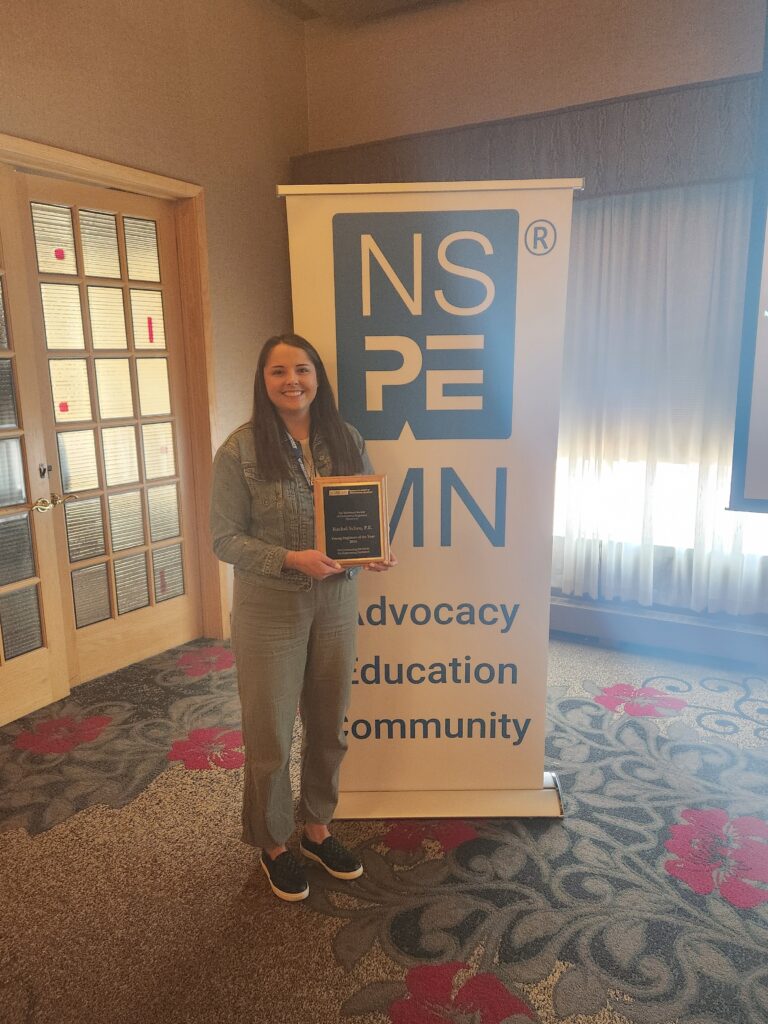
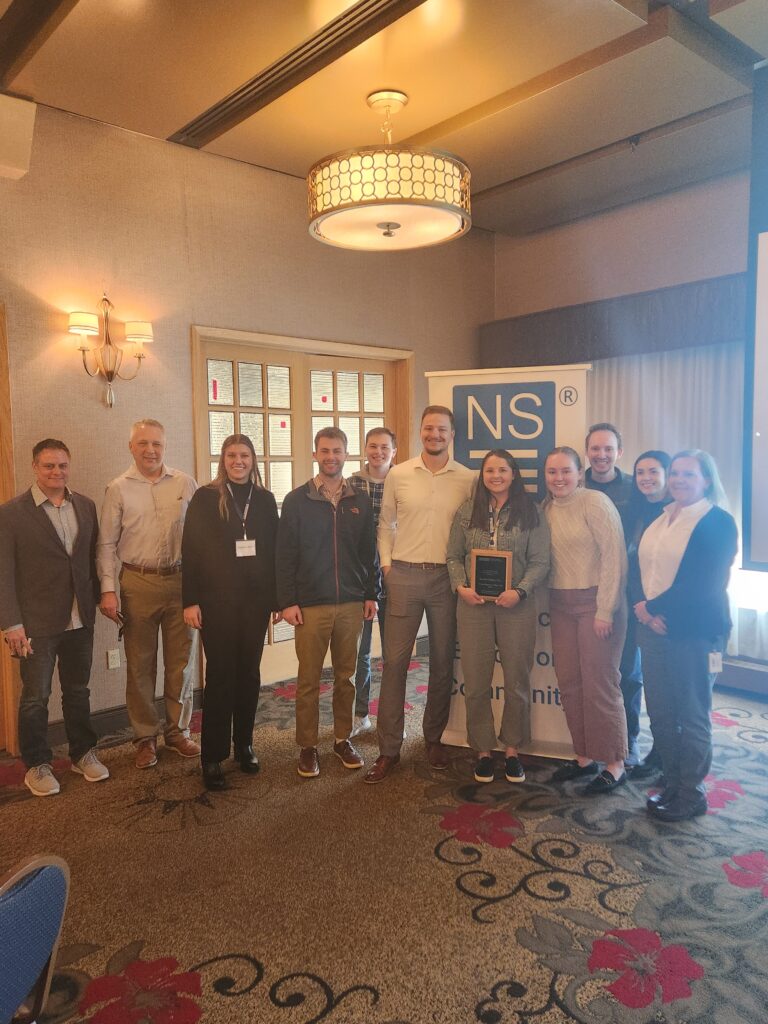
February 28, 2024
Johnson’s addition elevates the firm’s national presence and operations across the country.
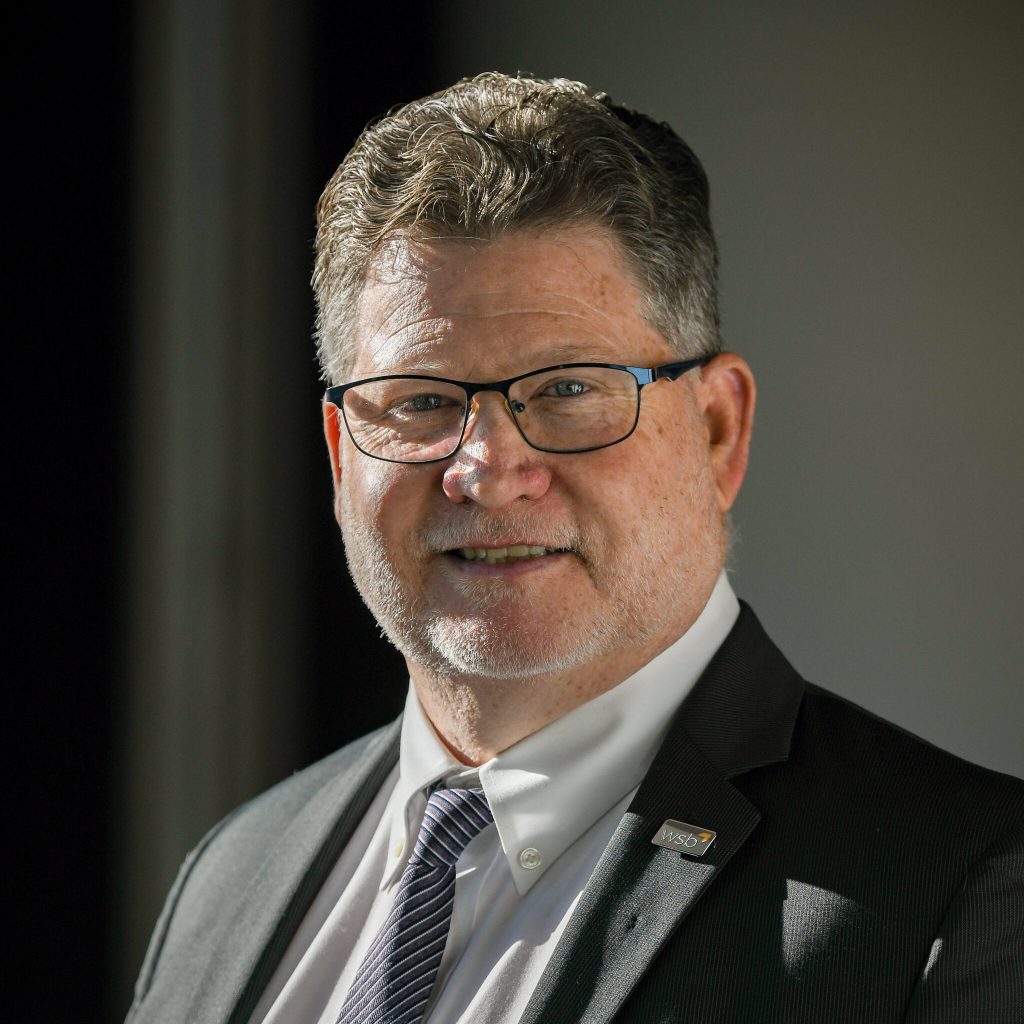
Oklahoma City, Okla. – Design and consulting firm WSB today announced the strategic hiring of Rick Johnson. Johson has joined WSB’s leadership as vice president of operations and is based out of the firm’s Oklahoma City office.
In this role, Johnson will support Jon Chiglo, WSB’s chief operating officer, in leading operations across the firm with a primary focus in Oklahoma. He improves operations, furthers project management and will integrate design and construction aspects in all regions moving forward. His guidance helps the firm build an even more consistent approach in its operations.
“Throughout his career, Rick has excelled in project management,” said Chiglo. “He has an extensive network in Oklahoma, and his local leadership ensures that we sustain our commitment to clients in the region. Rick’s collaborative efforts, attention to detail and ability to provide high-quality services make him very valuable to WSB and the future of this firm.”
Johnson holds 27 years of industry experience with the Oklahoma Department of Transportation (DOT), including many years on leadership. Throughout his career, Johnson has lead project delivery and design. Some notable projects include the I-244 Arkansas River tri-bridge and State Highway 51 Cottonwood Creek accelerated bridge construction (ABC).
“I have a long history supporting projects throughout Oklahoma and the region,” said Johnson. “Seeing the growth, potential and drive WSB brings to the table made me very excited to join the firm. I look forward to supporting operations across WSB as we continue to forge ahead.”
WSB is growing across the U.S. supporting communities in every region. The firm acquired EST Inc. in fall of 2023 and recently acquired AE Engineering in early 2024.
March 11, 2024
By Jake Newhall, Director of Water Resources, Mary Newman, Sr Environmental Scientist, and Emily Ball, Forestry Program Manager, WSB
As Midwesterners, we always expect Mother Nature to throw us some curveballs when it comes to weather. The winter of 2023-2024 has been no exception. El Nino weather patterns created unusually mild weather this winter and less snowfall. While cities may have benefited from things like fewer snow emergencies, what do these weather patterns mean as we head into spring?
Here are a few things to consider.
Stormwater Runoff
The lack of snowfall and warmer temperatures means that the ground is warmer than normal and contains less frost since there is not a layer of snow insulate the ground. The lack of precipitation and snowmelt could lead to drought this spring and into summer. Alternatively, if we do end up with significant snowfall in March and April, the thawed ground will allow water to absorb straight into the ground, resulting in less runoff and replenished groundwater sources.
If we don’t receive significant precipitation this spring, pond and lake levels are also expected to be lower than normal. While drought is a concern, the good news is that lower water levels provide an excellent opportunity for stormwater inspections. Other good news from a mild winter is that we are likely to see fewer environmental impacts this year from sanding, salting and runoff than in years with heavier snowfalls.
Lakes, Rivers and Streams
When thinking about water quality, it’s also important to think about what this mild winter will mean for lakes, rivers and streams.
Lack of snow cover and ice means that aquatic vegetation will have an early start this spring and likely result in an abundance, especially with invasive curly leaf pondweed. The increased abundance will have an impact on phosphorus levels in the water as these plants die back in the late summer. If the warm weather and low precipitation levels continue, this could mean a higher likelihood of harmful algal blooms which can put pets and animals at risk when they drink the water. However, the increased cover may benefit the aquatic community in the meantime for those that depend on its cover for survival.
Many water managers have a plan for invasive curly leaf pondweed management. This year, harvest may have to occur earlier and more often to combat a late season phosphorus rise. As in most years, it will also be important to monitor algal blooms and inform lake users if sampling indicates harmful bacteria levels that would have an impact to human and animal health.
Trees and Invasive Species Management
For communities managing tree health, it’s also critical to explore how this year’s mild winter will impact trees. With many places in dry or moderate drought conditions, more trees will experience drought stress. If precipitation patterns continue, it’s important to build out a plan for regular watering throughout the summer to protect trees. Furthermore, drought stress and lack of adequate watering can make trees more susceptible to secondary pests.
The lack of subzero temperatures this winter also means that the invasive species Emerald Ash Borer (EAB) larva largely survived the winter. It takes 24-48 hours of temperatures of -30 degrees Fahrenheit to kill EAB larva. EAB is a serious concern to ash trees across the United States, occurring in 30 states including Minnesota, Colorado, and Texas.
Oak wilt disease is another concern. The normal oak pruning season is typically from November through early April to prevent oak wilt transmission. For 2024, it will end earlier, oak tree pruning should be stopped immediately to protect tree health and limit the spread of oak wilt. The University of Minnesota Extension provides an oak wilt status page on their website that should be monitored closely each spring to ensure you aren’t pruning during high-risk oak wilt season.
How WSB Can Help
This unusually warm and dry winter is creating both problems and opportunities for communities – from managing water quality to protecting wildlife and native tree populations. WSB has a team of experts who can help plan and execute sustainable solutions that protect ecosystems, enhance water quality, restore habitats, and meet the unique needs of your community.
Jake has more than 15 years of engineering experience designing and managing many types of water resources projects, including modeling, planning, design, maintenance programs, and construction. Jake has worked with various municipalities, counties and state agencies to solve challenging water quality and water quantity problems.
[email protected] | 763.231.4861
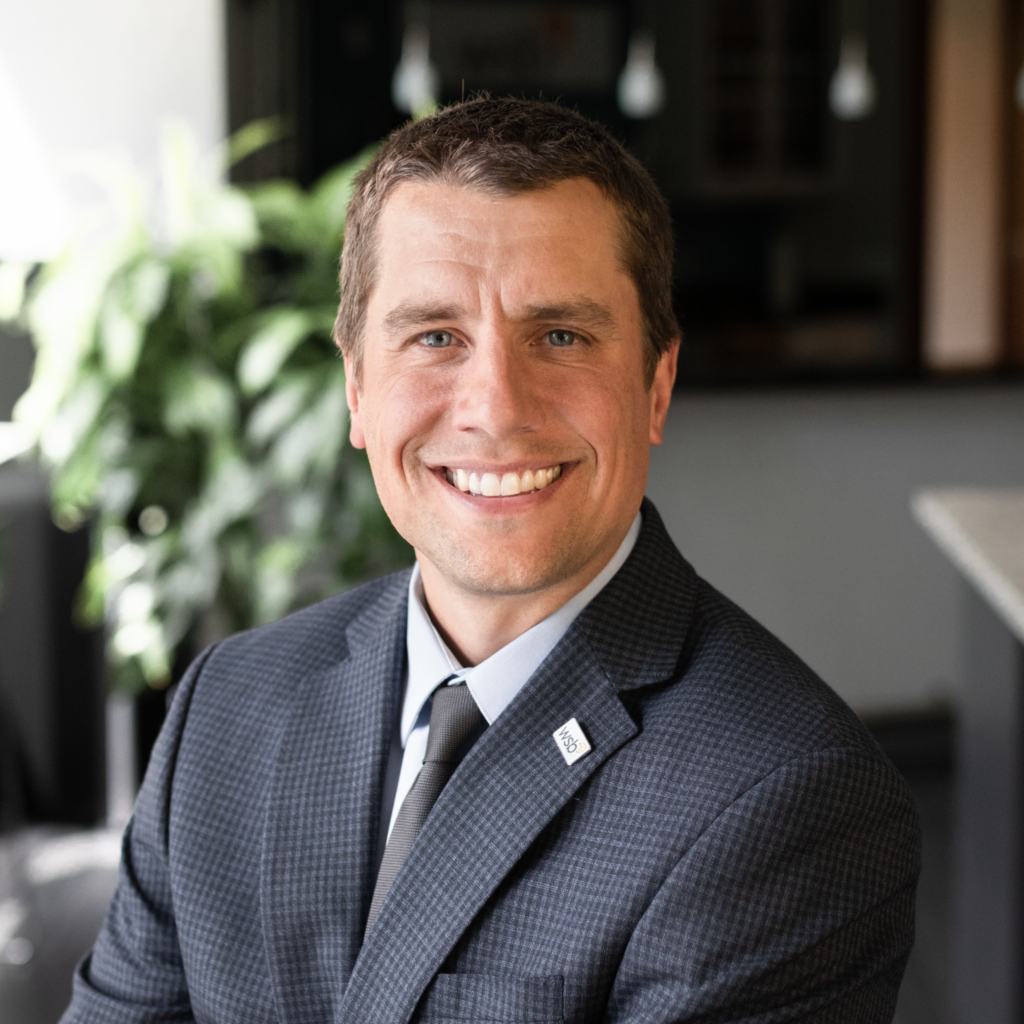
Mary works as an environmental scientist where she provides reliable field data collection and reporting that includes: boat electrofishing fish surveys, water quality sampling, in stream fish sampling, physical stream barrier observations and maintenance, various techniques for rough fish removal, fish tagging and tracking, and aquatic habitat improvement recommendations.
[email protected] | 763.762.2858

Emily is a ISA Certified Arborist, MN Tree Inspector that brings 20 years of experience, primarily in community forestry. She has extensive experience in contract administration, management of staff, AmeriCorps members and contractors, budget and grant management, plan review, tree health and condition inspections, outreach and education. She works closely with partner organizations, staff, and the community to educate, manage natural resources and provide excellent customer service.
[email protected] | 651.318.9945
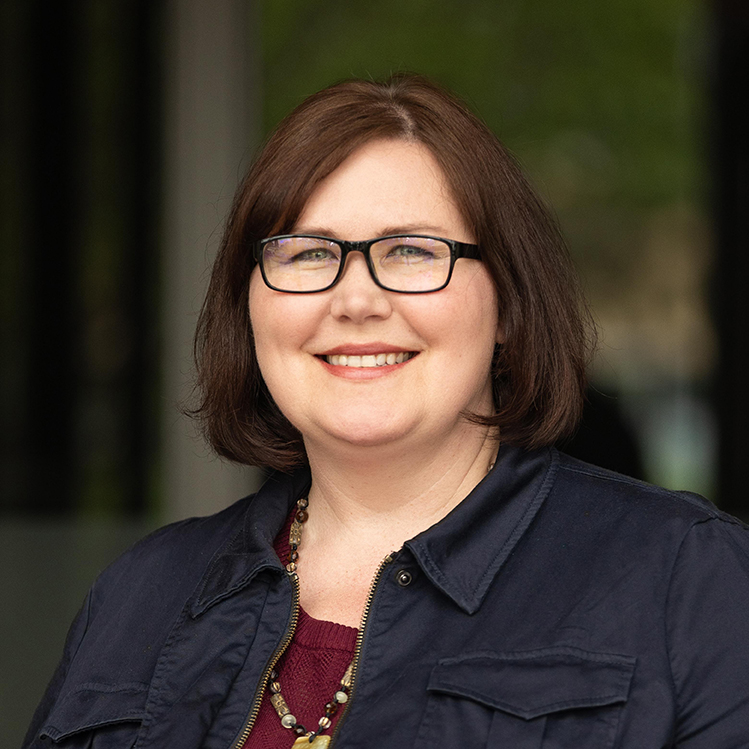
March 11, 2024
By Nate Sparks, Sr Professional Community Planner, WSB
In the last several years, the federal government has passed many programs that provide funding for projects and communities who incorporate sustainability and resiliency. Cities across the country are looking for ways to integrate these concepts into their community planning, not only because they are important and meaningful ideas, but doing so can open their community up to additional funding. Here are some tips to get started for community leaders that are interested in becoming a more sustainable community.
Establish Community Goals in the Comprehensive Plan
What does being a sustainable community mean? Do your residents want to encourage alternative energy sources? Are they concerned about stormwater management? There are many different forms that this can take. It is important that you have an established community vision. Adding a chapter into your city’s Comprehensive Plan is the ideal approach to take. Setting a big picture vision helps to establish what ordinance changes you pursue.
Prioritize Stormwater Management
The intrusion of improper elements into a city’s stormwater system can be very detrimental. To mitigate against such impacts, it is important to incorporate stormwater management techniques into your zoning ordinance. Setting an impervious surface maximum per building site in lieu of a lot coverage standard is a key first step. Establishing creative ways to allow exceptions for non-conforming lots or protecting sensitive areas with further limits in can be an ideal way to establish proper protections. Both options require careful consideration and proper ordinance writing.
Zoning For Alternative Energy Sources
Reduced energy demand may improve the reliability of the electricity grid. However, a city’s zoning ordinance may prohibit certain alternative energy systems. Solar panels and wind energy conversion systems that residents wish to use may not be allowed. Setting reasonable standards around such uses is a good way to encourage alternative energy solutions. Solar farms are not always appropriate for all areas and creating a thoughtful framework around this concept is of the utmost importance to a community. Finding solutions to resolve conflicts between competing community goals and proper management is ideal.
Subdivision Ordinance Innovation
Subdivision ordinances establish regulations necessary to allow the division of property for additional development rights. Establishing a framework for environmental protection in your subdivision ordinance will allow for a reasonable balance between development rights and environmental protection. For example, many communities explore concepts where population density can be increased if, in exchange, additional protections are offered to ensure long-term management of protected areas.
How we can help
The professionals at WSB can provide guidance and expertise in improving your regulatory systems to achieve your sustainable community goals in relation to sustainability. We have expertise in comprehensive planning, grant writing, and the preparation of ordinances that can help your organization achieve their goals related to sustainability.
Nate has been a community development professional for over 20 years. He has worked with a wide variety of communities providing guidance to municipalities of various sizes and types on a broad array of topics. He has significant experience working in townships and smaller cities which often face unique issues. His work includes writing comprehensive plans and zoning ordinances for several area communities, as well as serving the community point person for planning and zoning issues for 10 area cities and townships.
[email protected] | 952.221.0540
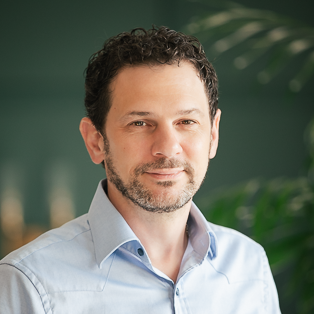
March 11, 2024
By Kim Lindquist, Director of Community Planning, WSB
Governments have a wide range of responsibilities when it comes to serving their communities. State and federal grant funding can be a boon, allowing local governments to get more value from their budgets and meet a variety of community needs.
However, the process required to receive grant funding can be complex and time intensive. For many county and municipal employees, finding, writing, filing and tracking grants may require the time and resources that staff just don’t have.
That’s where partnership with outside experts to help manage the grant process can give your community a competitive edge.
Currently, WSB is contracting with Otter Tail County in Minnesota to provide grant writing and administration services. Through WSB’s Community Planning team, Otter Tail County is able to relay priorities, receive up-to-date information on available grant options, have grants written and filed and receive administrative support after funding is received – freeing up critical time and resources for competing community priorities.
Here are some tips and ideas our experts bring to communities to help them compete and secure grant funding. .
Knowing How and When to File
Understanding when to apply and what grants best fit certain projects can be a bit of an art. For example, Minnesota Department of Employment and Economic Development (DEED) grants typically run on a July to July cycle where only a set amount of funding will be available each year. So what time during the cycle a community applies can have an effect on how much a project may receive. In addition, many state agency grant programs depend on funding from the Legislature where policy decisions directly impact what may be available in a fiscal year.
Through a regularly updated database of grant opportunities, counties and municipal staff are able to see what grants are available. Many communities use this database while also partnering with WSB’s subject matter experts to create a tailor-made grant strategy.
For instance, Otter Tail County is currently able to access a digital catalog of grant examples specifically crafted to fit their particular project focuses. This is on top of regular meetings with WSB’s team to dive into deeper specifics or adjust or expand their plans. If a client initially wants to focus on parks and trails, but then later wishes to include looking into housing projects they’ll have extensive information readily available with a trustworthy team ready to assist.
From Identification Through Administration
Just as identifying and writing grants can be a tall order, many communities can struggle with tracking funding and ensuring that all grant requirements are completed. For example, the partnership with Otter Tail County was generated from their staff understanding their own limits in time and manpower to manage the grants on top of their busy schedules. To meet that need, WSB provides support in the form of administering the grant throughout the entire process. Care and attention is paid to ensure that after funding is received, all grant requirements are adhered to – a unique service WSB provides to clients that helps provide peace of mind.
The Support Needed For Success
Counties and municipalities face hurdles – from staff time and limited resources to not knowing where to start with finding the right grant for a project. Digging through a multitude of agencies and grants and understanding the sometimes-complex requirements of each individual grant can be a tall order. That is why partnership and tapping into outside experts can make a big difference.
From initial meetings to discuss goals through receiving funding and providing administrative support, WSB works with communities from start to finish. If your county or municipality requires support maneuvering through the complex grant filing process, WSB is here to help and be a partner with your community.
Kim is a planning professional with over 30 years of experience overseeing a variety of complex planning projects. She has worked in high growth communities with developers and the public on entitlements for residential development and attracting business to the city.
[email protected] | 763.287.8303

August 14, 2023
By Kim Lindquist, Director of Community Planning and Economic Development, WSB
Thoughtful, comprehensive and smart community development takes planning. Communities need to be socially and economically resilient, as well as attract and advance projects that benefit residents, local businesses, and the community as a whole.
Data and technology are key to twenty-first century community development, and adapting to and adopting smart strategies and tools can help give communities the edge in building the city of tomorrow.
Here are some ways that cities are getting smart about community development.
Smart tools better promote cities and project opportunities to developers.
City leaders know that their community is the best place to live, work, and grow a business. But how is that easily communicated to the right audiences to attract development and investment? That is where smart tools come into play.
More than ever before, people expect to have information at their fingertips. For local leaders, that means ensuring that the community’s online presence is accessible and does a good job telling the story about why your community matters.
This also means having a place where developers can easily find what parcels of land are ready and available for development. Critical data for developer decision-making includes not only spaces that appear “shovel-ready,” but also what transportation systems are near a property, what utilities serve the area, and more.
Some utilities like Xcel Energy and the State of Minnesota allow developers to search their databases online to find development property that meets their individual needs. Being aware of, and partnering with these services, can also ensure cities are promoting what is available and ready for investment.
Use data to make communities more resilient.
Resiliency is key to community development, and a vital part of resiliency is having a diversified tax base with a good mix of residential, commercial, and industrial properties. This is also important to help communities withstand economic downturns.
When crafting comprehensive plans, building strategies to attract new development, and planning for growth, data is more important than ever. Most cities have a trove of data available and using that information in smart ways to guide decision-making helps ensure community durability and resiliency.
Smart cities empower residents to engage and make communities more accessible.
Whether it’s a resident easily pulling up data on zoning and permitting to build a deck extension on their home or participating in public meetings on a community’s comprehensive plan, technology is making it easier for residents to engage with and be invested in the future of their city.
As cities plan new neighborhoods or projects for example, they can foster community buy-in by using virtual tools to illustrate what a completed project will look like. Advances in surveying and mapping also allow for more instantaneous engagement and better demonstrate to residents and developers where there are meaningful opportunities for growth.
Smart cities meet people where they are, and technology makes information easily available and accessible.
How WSB Can Help
WSB’s team of experts help local leaders with community planning, zoning applications, permitting, developing and executing comprehensive plans, and ensuring community resiliency. We work with cities every day to build smart tools and tactics into their community development strategies.
Kim is a planning professional with over 30 years of experience overseeing a variety of complex planning projects. She has worked in high growth communities with developers and the public on entitlements for residential development and attracting business to the city.
[email protected] | 763.287.8303




